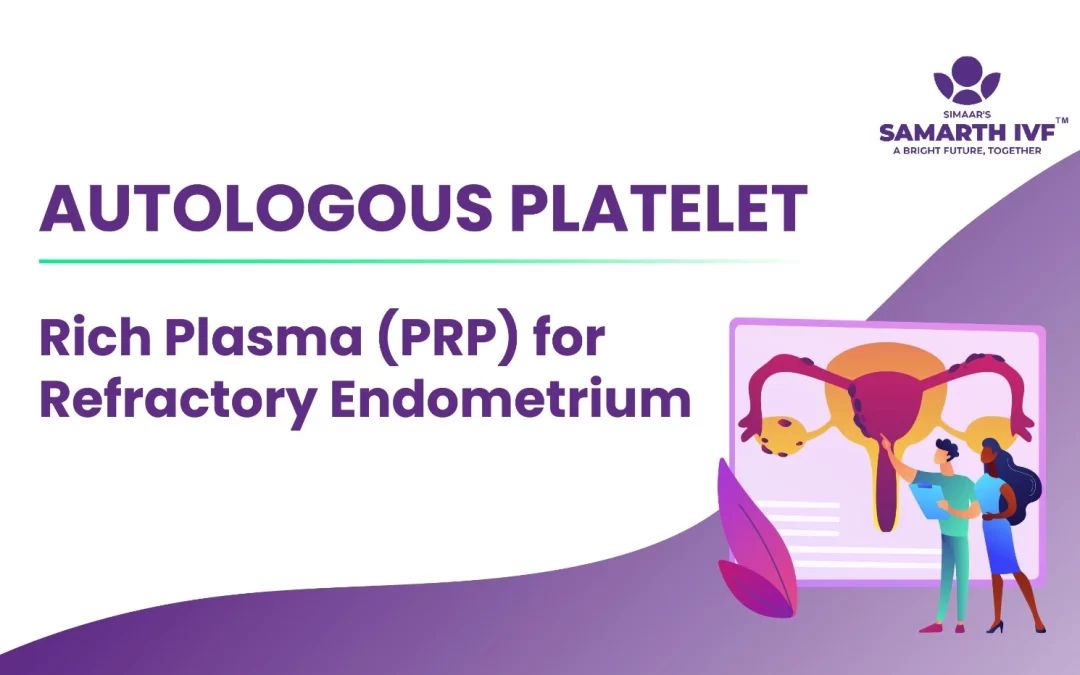The success rate of assisted reproduction techniques (ART) has long been less than satisfactory despite significant advancements in recent years. This underscores the need for alternative options in ART cycles. Among the most challenging infertility-related factors hindering successful pregnancy are refractory thin endometrium and recurrent implantation failure. Several adjuvant therapies have been investigated to increase endometrial thickness and the pregnancy rate. However, the treatment effect remains minimal, and for many patients, these treatment methods can be quite costly and difficult to approach.
Growing evidence correlates the effect of intrauterine platelet-rich plasma (PRP) infusion on the endometrium with reassuring reproductive results. PRP is a volume of plasma, obtained by centrifugation of the patient’s whole blood, that has a platelet count above baseline. PRP has been found to facilitate the growth rate and cell viability of primordial or primary to pre-antral stage follicles and improve ovarian function, pregnancy, and birth rates. The instigating effect of PRP on endometrial cell proliferation and migration has been revealed, along with the expression of numerous factors inherently involved in endometrial regeneration and repair.
Mechanism and Benefits of PRP
With the intrauterine infusion of PRP, numerous proteins, several growth factors (GFs), and cytokines stored in the platelets act on the endometrium. They promote cell proliferation and neo-angiogenesis and exhibit anti-inflammatory properties, resulting in successful implantation. The local administration of PRP has shown to be effective in attaining successful implantation in women with thin endometrium undergoing frozen embryo transfer (FET) cycles.
Key benefits of PRP include:
- Facilitating Growth and Viability: PRP enhances the growth rate and cell viability of follicles from primordial or primary to pre-antral stages.
- Improving Ovarian Function: Studies have shown improved ovarian function with the use of PRP, leading to better pregnancy and birth rates.
- Endometrial Regeneration: PRP promotes endometrial cell proliferation, migration, and expression of factors involved in endometrial repair.
- Anti-inflammatory Properties: The anti-inflammatory properties of PRP help create a conducive environment for successful implantation.
- Promotion of Angiogenesis: PRP stimulates new blood vessel formation, which is crucial for endometrial receptivity and implantation.
Clinical Outcomes and Future Directions
Autologous PRP has suggested promising results in women with thin endometrial lining as well as women with diminished ovarian reserve or recurrent implantation failure. The application of PRP in these conditions has been shown to potentially result in improved outcomes.
Recent studies have highlighted:
- Enhanced Endometrial Thickness: Women with refractory thin endometrium have shown significant improvement in endometrial thickness following PRP treatment.
- Increased Pregnancy Rates: There is a notable increase in pregnancy rates among women who received PRP treatment compared to those who did not.
- Better Live Birth Rates: The overall live birth rates have also seen an improvement with PRP therapy, making it a promising adjuvant in ART cycles.
Conclusion
Autologous PRP infusion presents a promising alternative in the management of refractory thin endometrium and recurrent implantation failure in ART. Its ability to enhance endometrial thickness, improve ovarian function, and increase pregnancy rates offers new hope for couples struggling with infertility. While further research and larger clinical trials are needed to solidify these findings, the current evidence supports the potential of PRP as a valuable addition to fertility treatments.
By continuing to explore and refine this innovative approach, we can hope to achieve higher success rates in assisted reproduction, providing renewed hope and opportunities for those facing infertility challenges.
by Harshlata Ladda
Please note: It’s important to note that this blog is for informational purposes only and should not be taken as medical advice. If you have any concerns about your health, please consult a healthcare professional.
